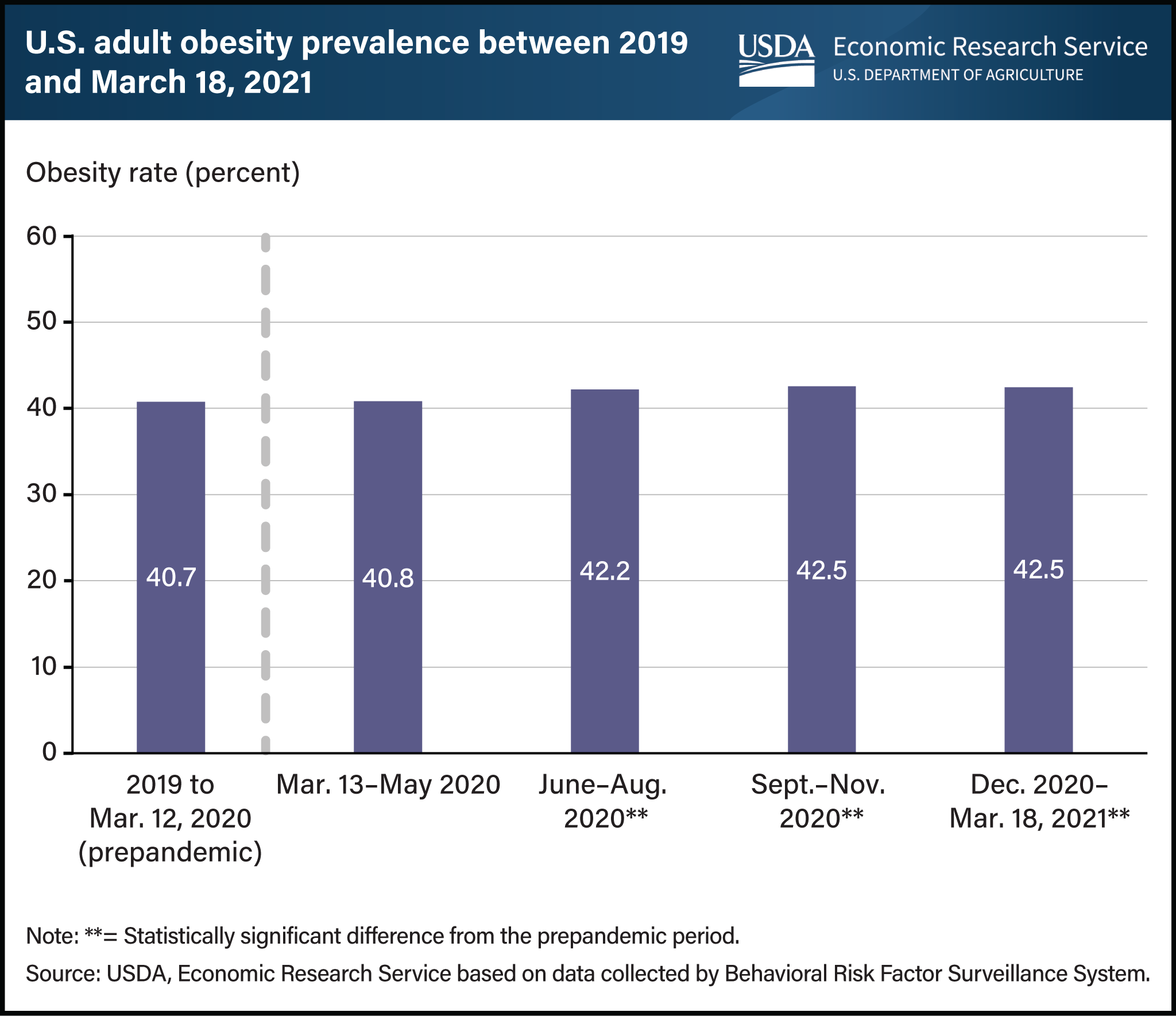Obesity rates among U.S. adults increased during the first year of the COVID-19 pandemic
- by Mariah Ehmke
- 8/16/2023

In early 2020, shortly after the Coronavirus (COVID-19) pandemic was declared in the United States, obesity was identified as a risk factor for medical complications and death from the virus. Broad efforts to contain COVID-19 included travel, work, and social restrictions. Such behavioral adjustments disrupted the dietary and activity patterns of U.S. adults. Data from Behavioral Risk Factor Surveillance System (BRFSS) indicate the percentage of adults with obesity was 40.7 percent in early 2020. One year later, this rate grew by 1.8 percentage points to 42.5 percent. There was not an immediate, substantial increase when the pandemic began. Rather, the obesity rate was statistically indistinguishable from the prepandemic prevalence during the first 3 months of the pandemic (March–May 2020) at 40.8 percent. The next three time periods saw statistically significant increases relative to the baseline prepandemic period. Obesity prevalence increased 1.5 percentage points to 42.2 percent in the June–August 2020 period compared with the prepandemic prevalence. Obesity prevalence slightly increased again to 42.5 percent in September–November 2020 and remained at this level through March 2021. The total obesity rate increase from March 2020 to March 2021 was more than triple the average yearly growth rate of 0.5 percentage points in the preceding decade, 2011–2019. This chart appears in the USDA, Economic Research Service COVID-19 Working Paper: Obesity Prevalence Among U.S. Adult Subpopulations During the First Year of the COVID-19 Pandemic.


